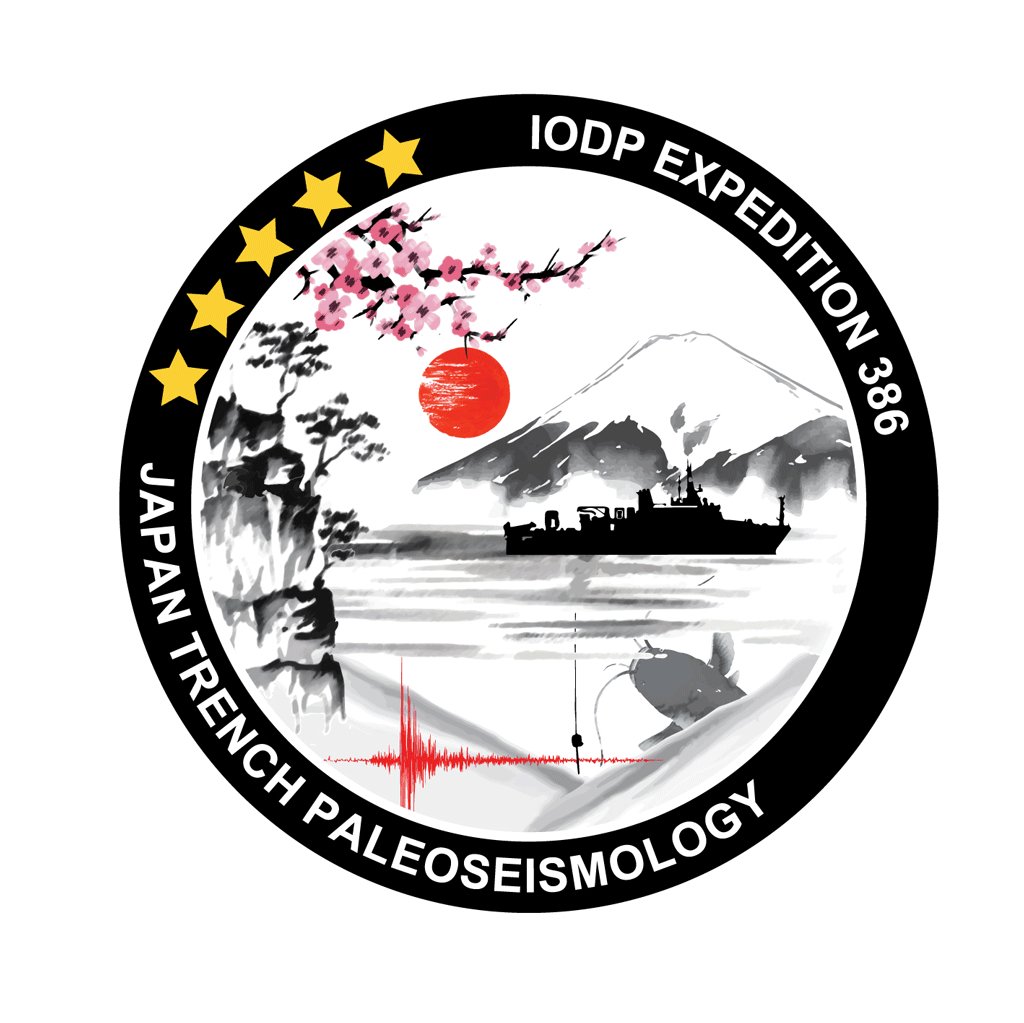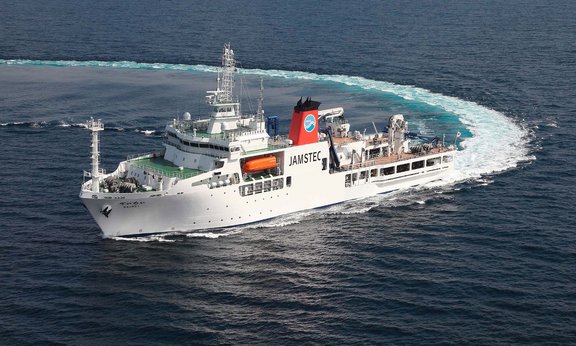Exactly ten years ago today, on 11 March 2011, Japan was unexpectedly struck by one of the most severe earthquakes ever recorded, resulting in a disaster. The Tohoku-oki earthquake registered 9.0 on the moment magnitude scale (Mw) – a - precise scientific indication of the strength of earthquakes: it triggered a tsunami with enormous destructive force that killed thousands of people and resulted in a nuclear disaster at the Fukushima-Daiichi nuclear power plant. Smaller earthquakes are not unusual in Japan, as the country is located on the so-called Pacific Ring of Fire, a tectonically highly active area. "The entire spectrum of possible earthquake processes can be studied there. Of particular interest to us are strong earthquakes, i.e. earthquakes with a moment magnitude of nine or more. Which processes lead to such strong earthquakes and how often they occur is still not fully understood," explains Michael Strasser, head of the Sedimentary Geology Working Group at the Department of Geology and Austrian Core Facility for scientific core analysis at the University of Innsbruck. The expedition is led by Strasser together with Dr. Ken Ikehara from the National Institute of Advanced Industrial Science and Technology (AIST) in Japan. "In order to better understand the causes and frequency of giant earthquakes, we will use cores from the deep sea as a prehistoric seismograph. In the sediment sequences from the deep sea, we can find deformation structures that were triggered by past strong earthquakes and reconstruct their intensity and frequency far into the past," the geologist explains. A closer look into this geological past is now the aim of the Expedition 386 "Japan Trench Paleoseismology" of the International Ocean Discovery Program (IODP). A team of scientists will leave the port of the city of Yokusuka on 13 April 2021 on board of the research vessel Kaimei in the direction of the Japan Trench. Michael Strasser will be the scientific co-leader of the expedition - initially from his "home office" at the University of Innsbruck due to the pandemic in the first few weeks. Dr. Ken Ikehara is on board the ship in Japan.

8 kilometres below the ocean surface
The Pacific Ring of Fire is a 40,000 kilometre long belt around the Pacific Ocean on three sides. The majority of all earthquakes and seaquakes on Earth occur along this ring. The reason for this are so-called subduction zones, where oceanic parts of the earth's crust bend and move under overthrusting earth plates. In this process, elastic strain accumulated by global plate tectonic movements over a longer period of time, is then suddenly released during so-called subduction zone or megathrust earthquakes. Such subduction zone earthquakes and associated tsunamis - as the Sumatra earthquake (2004) and the Tohoku-oki earthquake (2011) - are major natural hazards with potentially catastrophic consequences for people and infrastructure. "Since the earth's tectonic plates are constantly in motion, such huge earthquakes will occur again. However, the instrumental and historical records are not sufficient to reduce uncertainties in earthquake hazard assessment along subduction plate boundaries," clarifies Michael Strasser. The IODP-expedition is now investigating sediment deposits in basins up to eight kilometres deep at the bottom of the Japan Trench. These basins were formed by the downward bending of the oceanic Pacific Earth plate along the subduction zone of the Japan Trench and are considered ideal sites for studying past earthquakes. “These ultra-deep water basins are among the deepest and least-explored environments on Earth, but they comprise the terminal sink of earthquake-triggered sediment remobilization, thus providing excellent and continuous archives of past earthquake occurrences,” says Co-chief Scientist Michael Strasser (University of Innsbruck, Austria). “It’s as if the sedimentary archive were an ultra-deep-water seismograph that has been recording major earthquake events over time periods extending several tens of thousands of years into the past. The most recent giant 2011 Tohoku-oki Earthquake and older megathrust earthquakes documented in Japanese written history allow us to calibrate this ‘natural seismograph’ to unravel this sedimentary deep-time archive of past earthquakes”, says Strasser.
100,000 years into the past
In order to unravel the information from the sediment, a so-called Giant Piston Corer, deployed by the research vessel Kaimei, is being used for the first time in this IODP expedition. The aim is to obtain sediment samples covering the last 50,000 to 100,000 years. Cores will be taken at several locations along the entire Japan Trench (36 to 41 degrees north). " This will allow us to study the temporal and spatial distribution of past earthquake occurrences along the entire Japan Trench Subduction zone, including different earthquake rupture segments that may or may not have ruptured in one giant or several great earthquakes, respectively,” says Co-chief Scientist Ken Ikehara (National Institute of Advanced Industrial Science and Technology, Japan). “This will deliver unprecedented long-term observational data to constrain earthquake recurrence patterns – such as cyclic vs clustered vs random events – for reliable hazard assessment and help us to understand why some megathrust rupture propagate to produce giant earthquakes, while others do not.”, says Dr. Ken Ikehara of the AIST (National Institute of Advanced Industrial Science and Technology) in Japan.
Research vessels Kaimei and Chikyu
35 scientists from various geoscientific disciplines from Austria, Germany, Australia, China, England, Finland, France, India, Japan, Korea, Sweden and the United States are participating in IODP Expedition 386 "Japan Trench Paleoseismology". Four of these scientists will now set sail on the research vessel Kaimei on 13 April, together with the ship's crew and the technical team from Japan. After the offshore phase this spring, the entire scientific team will meet for the first time in autumn on board the drilling vessel Chikyu. The laboratory infrastructure of this vessel will then be used to analyze the sediment cores obtained whilst docked at the port. The curated cores will be made available to the international research community for further investigation.
The expedition is being conducted by the European Consortium for Ocean Research Drilling (ECORD) in collaboration with the Institute for Marine-Earth Exploration and Engineering (MarE3) / Japan Agency for Marine-Earth Science and Technology (JAMSTEC) as part of the International Ocean Discovery Program (IODP). The IODP is an international marine research programme that currently comprises 23 countries. The Austrian Academy of Sciences (ÖAW) is the supporting organisation for Austria's membership in ECORD and IODP.

